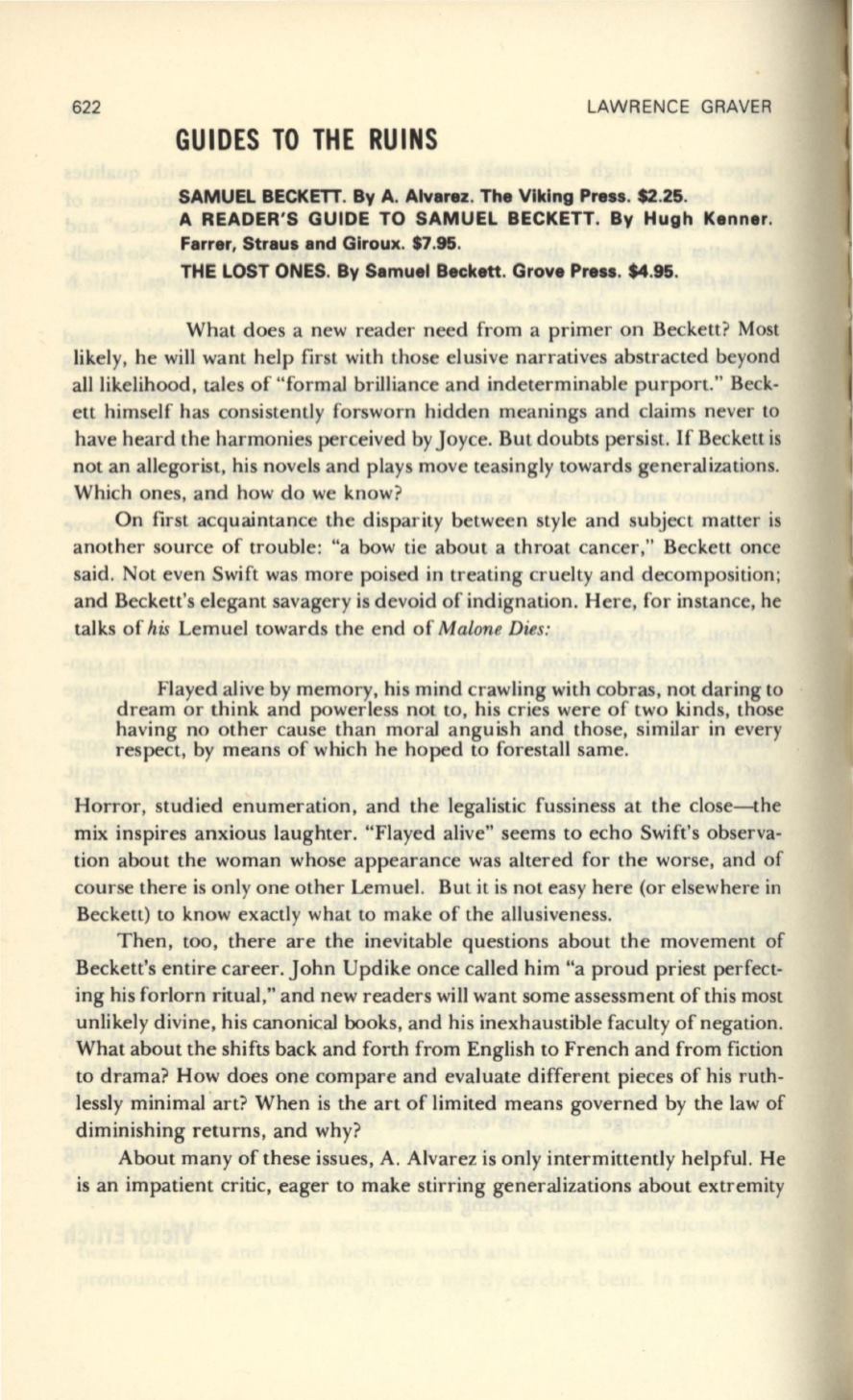
622
LAWRENCE GRAVER
GUIDES TO THE RUINS
SAMUEL BECKETT. By A. Alvar.z. Th. Viking Pre...
$2.25.
A READER'S GUIDE TO SAMUEL BECKETT. By Hugh K.nn.r.
Farr.r, Straus and Giroux.
$7.95.
THE LOST ONES. By Samu.1 Beck.tt. Grov. Pr....
$4.95.
What does a new reader need from a primer on Beckett? Most
likely, he will want help first with those elusive narratives abstracted beyond
all likelihood, tales of "formal brilliance and indeterminable purport." Beck–
ett himself has consistently forsworn hidden meanings and claims never to
have heard the harmonies perceived by Joyce. But doubts persist. If Beckett is
not an allegorist, his novels and plays move teasingly towards generalizations.
Which ones, and how do we know?
On first acquaintance the disparity between style and subject matter is
another source of trouble: "a bow tie about a throat cancer," Beckett once
said. Not even Swift was more poised in treating cruelty and decomposition;
and Beckett's elegant savagery is devoid of indignation. Here, for instance, he
talks of
his
Lemuel towards the end of
Malone Dies:
Flayed alive by memory, his mind crawling with cobras, not daring to
dream or think and powerless not
to,
his cries were of two kinds, those
having no other cause than moral anguish and those, similar in every
respect, by means of which he hoped to forestall same.
Horror, studied enumeration, and the legalistic fussiness at the c1ose-the
mix inspires anxious laughter. "Flayed alive" seems to echo Swift's observa–
tion about the woman whose appearance was altered for the worse, and of
course there is only one other Lemuel. But it is not easy here (or elsewhere in
Beckett) to know exactly what to make of the allusiveness.
Then, too, there are the inevitable questions about the movement of
Beckett's entire career. John Updike once called him "a proud priest perfect–
ing his forlorn ritual," and new readers will want some assessment of this most
unlikely divine, his canonical books, and his inexhaustible faculty of negation.
What about the shifts back and forth from English to French and from fiction
to drama? How does one compare and evaluate different pieces of his ruth–
lessly minimal art? When is the art of limited means governed by the law of
diminishing returns, and why?
About many of these issues, A. Alvarez is only intermittently helpful. He
is an impatient critic, eager to make stirring generalizations about extremity


